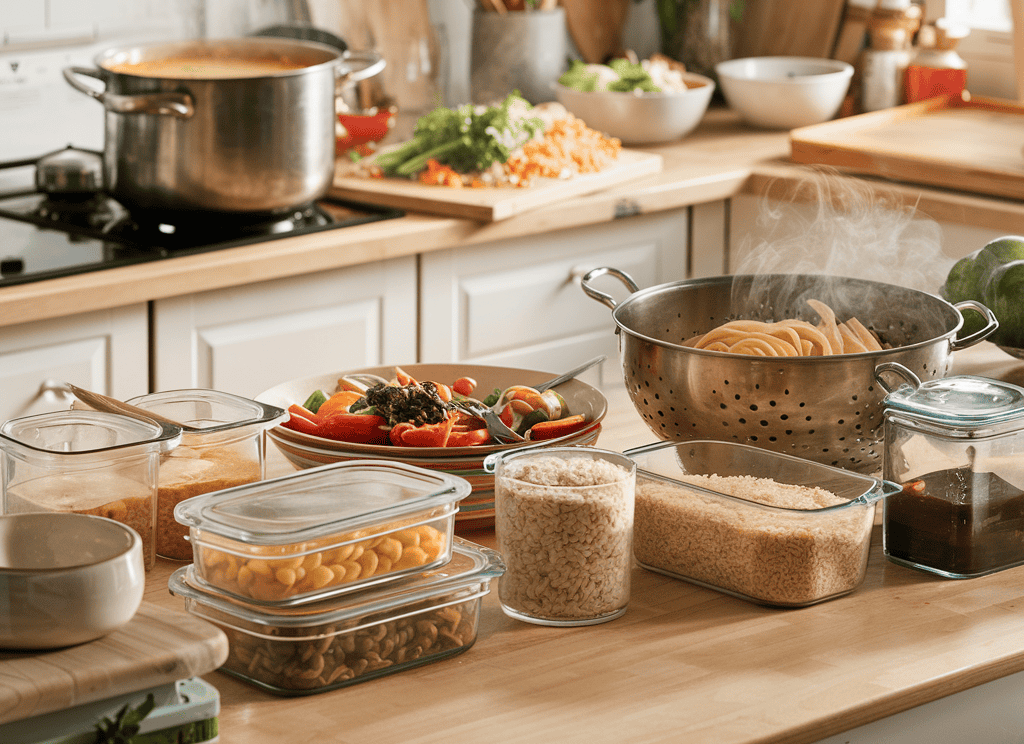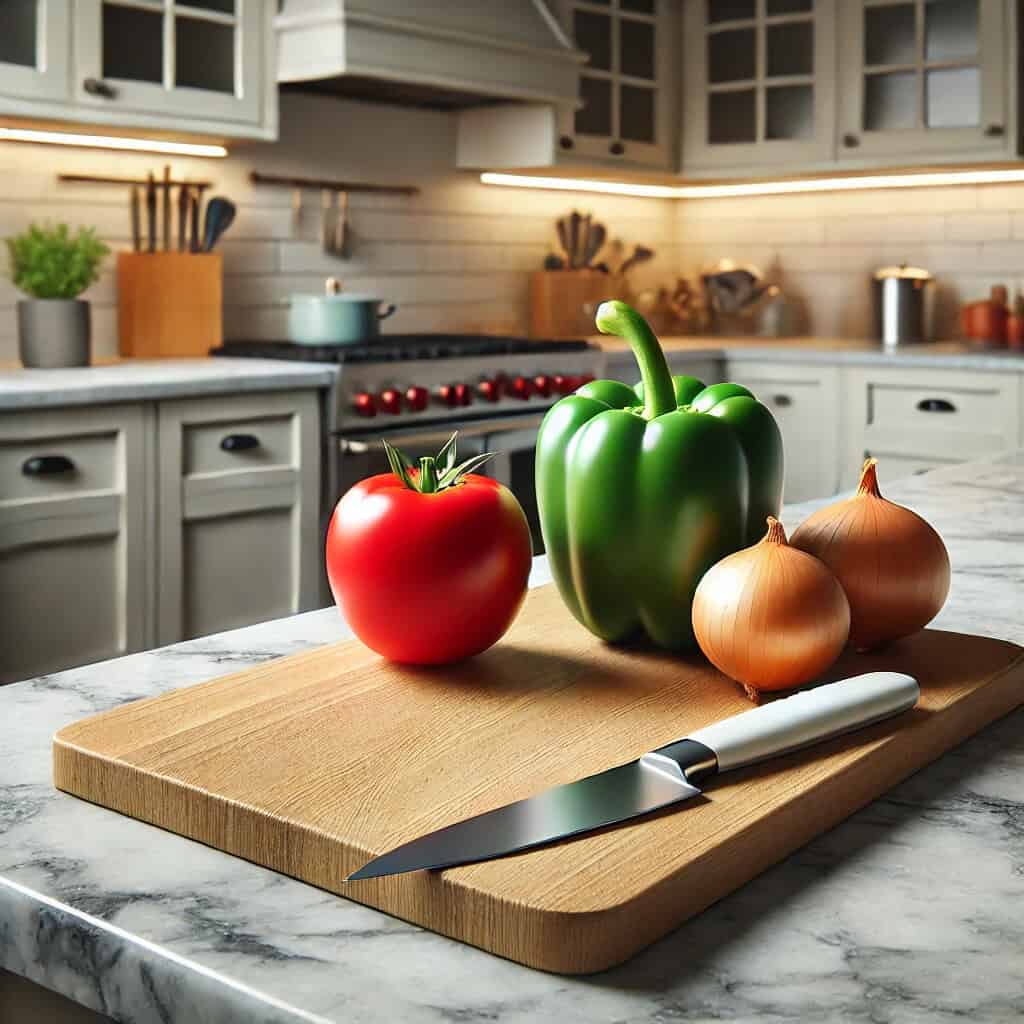Picture this: you get home after a long day. Instead of finding an empty fridge or calling for takeout again, you open the fridge to see containers filled with tasty meals. No stress, no mess, and no more thinking about dinner. That’s the magic of batch cooking. Once I gave it a try, I couldn’t believe how many years I lived without it.
Batch cooking is pretty straightforward. You cook a big batch of food all at once, then divide it into portions and store it for later. You can make soups, roasted vegetables, or grains. This way, you avoid the nightly panic of “What’s for dinner?” If you’re just starting, don’t sweat it. You don’t need fancy gadgets or lots of time. Just a bit of planning and some space in your fridge will do the trick.
Many of us try batch cooking because we want to save time. Maybe you’re tired of eating takeout too often, or maybe you find yourself hungry after work, staring into the fridge wishing food would appear. Cooking a meal from scratch on busy nights can feel impossible. I often ended up snacking on random stuff instead of making a real dinner. Batch cooking changed all that.
And let’s not forget the health benefits. When your fridge is full of ready meals, you’re less likely to grab junk food. Plus, it helps cut down on waste. Those veggies hiding in the back of your fridge don’t stand a chance when you cook ahead.
Sure, starting can feel tricky. I stressed a lot at first. I worried about how much to cook, how to store it, and if it would even taste good later. I made some mistakes, like that time I cooked a whole pot of quinoa without seasoning it. Eating plain quinoa for three days? Not fun at all. But I learned from those blunders. Now, I can confidently say that batch cooking is one of the best habits I’ve started.
If you feel like there isn’t enough time to cook or you’re sick of meal stress, batch cooking could be the solution. In this guide, I’ll show you how to get started, share my top tips, and help you avoid the mistakes I made. Let’s get going—your fridge of ready meals is waiting!
What Is Batch Cooking?
Batch cooking is pretty simple. It’s about making a lot of food at once so you can eat it later. It’s like cooking for the future. You’re not just thinking about dinner tonight. You’re also making meals for the rest of the week. Whether it’s a big pot of soup, roasted veggies, or a batch of rice, you cook once and eat several times. It’s all about saving yourself some time later.
If you’re new to meal prep, batch cooking can really help. It can feel tough to make meals for an entire week, but batch cooking makes it easier. Instead of making lots of little meals, you whip up a few big dishes or key ingredients. You can mix and match during the week. Those roasted veggies can go into a grain bowl one night and a wrap the next. It’s flexible and takes the pressure off.
One great thing about batch cooking is that it cuts out daily cooking stress. Imagine coming home tired after a long day. The last thing you want to do is chop onions and cook rice. With batch cooking, you don’t have to. You just reheat and enjoy. It’s like having a personal chef—you! And you’ll be thankful for your hard work on a busy night.

Batch cooking also helps reduce food waste. We’ve all bought veggies with good intentions, only to find them going bad in the fridge. By cooking in bulk, you’re using your fresh ingredients and giving them a purpose. You save money and throw away less food.
And let’s talk about health. When you batch cook, you can choose what goes into your meals. That means more veggies and whole grains, and fewer fast food runs. Plus, having healthy meals ready makes it easier to stick to your eating goals, like eating healthier overall.
If batch cooking sounds scary, don’t worry. You’re not alone. I felt the same way when I started. I thought I had to make enough food for the whole week. But that’s a lot of work! Pick a couple of recipes or just prep some grains and veggies. You’ll see how easy it gets and how much smoother your week goes when you aren’t rushing to cook every night.
Benefits of Batch Cooking
Batch cooking is all about making meals in big batches. It can really change how you cook and eat for the week.
- Try new recipes: Expand your meal rotation and explore new options
- Save time: You cook once, but you eat many times especially if you freeze meals for future use.
- Reduce decision fatigue: No more asking, “What’s for dinner?”
- Eat healthier: You can control what goes into your meals and the portion size.
- Save money: Buy ingredients in bulk and skip takeout.
- Cut food waste: Use up fresh food before it goes bad.
Tools for Easy Batch Cooking
If you want batch cooking to be easy and fun, having the right tools is super helpful. You don’t need a fancy kitchen, but a few basic items can make a huge difference. Here’s a list of essential tools for batch cooking, plus some of my top picks to make meal prep more efficient.
Want a complete guide to the best meal prep tools? Check out 10 Essential Meal Prep Tools for Success, where I break down exactly what you need to make batch cooking a breeze.
Large pots and pans
A good-quality large pot is super helpful for batch cooking. You can use it for chili, soups, or even cooking grains for the week. Just make sure it’s big enough to hold family meals without spilling. I recommend a stainless steel stockpot. It’s tough, heats evenly, and it’s easy to clean—no scrubbing needed!
You also need a large skillet or pan. It’s great for sautéing veggies or cooking tofu. If it’s nonstick or cast iron, cleanup is even easier after cooking.
Baking Sheets
If you like roasting veggies, baking tofu, or making sheet pan meals, you need a good baking sheet. I use a heavy-duty baking sheet with a rimmed edge. It spreads heat well, lasts a long time, and stops drips from making a mess in the oven. Trust me, I’ve made that mess before, and it’s not fun!
For even easier cleanup, I pair my baking sheets with reusable silicone baking mats. They don’t stick, are good for the planet, and you don’t need parchment paper or extra oil. They seriously make roasting veggies or baking cookies super easy.
If you hate scrubbing pans, you should try these silicone mats. They’ve made a big difference in my kitchen!
Food Storage Containers (Glass or Reusable Options)
Keeping your meals fresh and organized is key for batch cooking. I’ve tried many containers, but I always go back to glass containers. They last a long time, stack easily, and don’t pick up smells like plastic does. They’re also safe for microwaves and dishwashers, so reheating and cleaning is super easy.
If you’re freezing food, having a variety of container sizes helps a lot. Smaller containers are great for single servings. Larger ones can hold soups, stews, or a whole family meal. I also like using reusable silicone bags for snacks or chopped veggies. They’re friendly for the planet and save space in the freezer.
Want to step up your storage game? These glass containers have really helped me out, and they keep food fresh. Whether you’re prepping for the week or stocking up your freezer, good storage solutions make a big difference.
Freezer Bags or Vacuum Sealers
Freezing meals is a smart way to make the most of your batch cooking. Using the right storage is super important. I really like reusable freezer bags. They’re good for the planet, seal tightly, and save space in the freezer. They work great for soups, sauces, and chopped veggies. Plus, they’re way stronger than those single-use bags.
If you want to keep meals fresh for weeks, think about getting a vacuum sealer. It takes out the air before sealing, which helps stop freezer burn and keeps your food safe longer. I use mine for cooked grains, and pre-frozen veggies. It’s really helped cut down on food waste.
Looking for a way to keep your meals fresh and neat? Check out these freezer bags and the vacuum sealer I recommend. Once you try them, you’ll see how handy they are!
Sharp Knives and a Cutting Board
A sharp knife and a good cutting board are essential for batch cooking. Without them, chopping onions or slicing sweet potatoes can be a pain. My favorite tool is a chef’s knife. It can do everything from slicing veggies to chopping herbs. When you pair it with a durable cutting board, meal prep gets a lot easier.
Using a sharp knife is not just faster; it’s safer, too. Dull knives need more force. This can lead to slips and accidents, which are frustrating and painful. Keeping your knife sharp with a honing steel or knife sharpener makes prep time smooth. I used to struggle with hard veggies like butternut squash and even small cherry tomatoes because my knife was dull. Now, it’s a piece of cake.
For cutting boards, I suggest one that won’t slip and won’t hurt your knife’s blade. I really like bamboo cutting boards because they last a long time, are good for the environment, and don’t keep smells like plastic boards do. If you’re prepping a lot, having more than one board can save you time and energy.
Step-by-Step Guide to Batch Cooking for Beginners
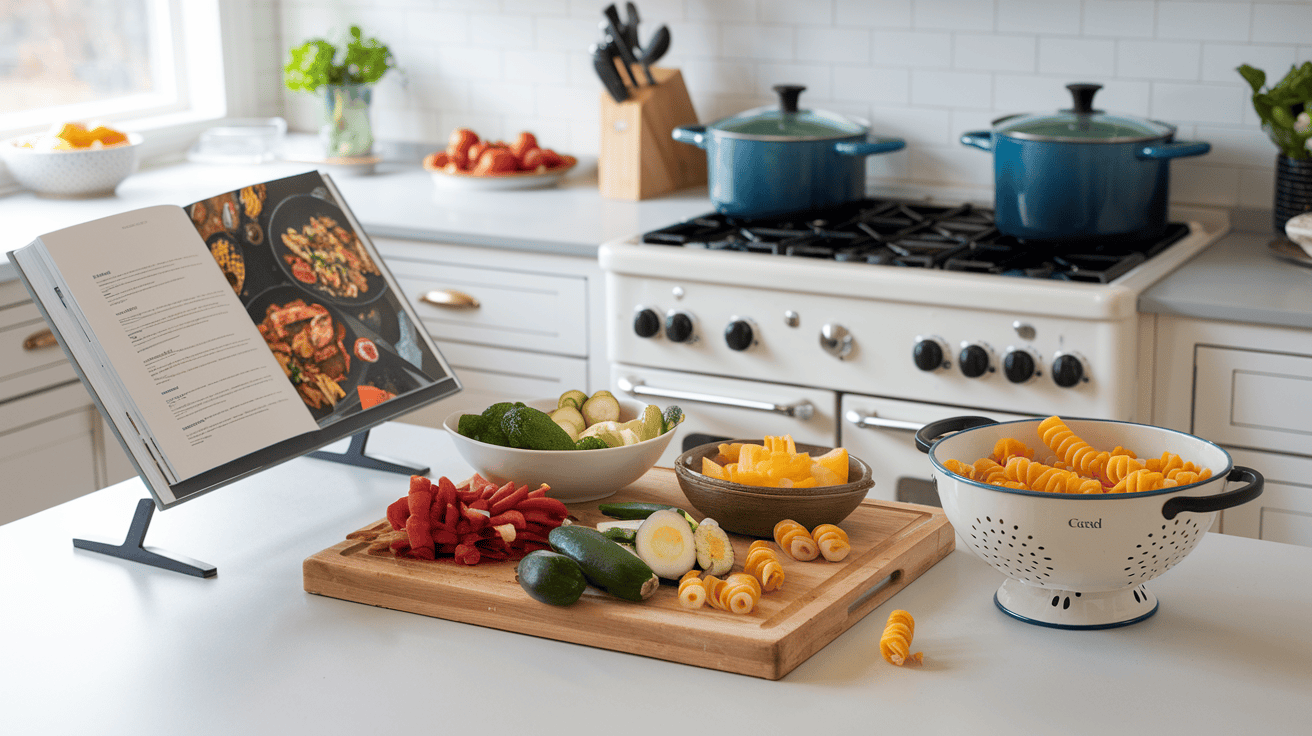
Step 1: Plan Your Menu
The first step to efficient batch cooking is choosing recipes with overlapping ingredients. For example, if you’re making a grain bowl, roasted veggies can double as a side dish for tacos or pasta. This saves time and keeps your menu flexible.
Stick with simple, beginner-friendly meals like soups, stews, grain bowls, or pasta dishes. Here’s a quick idea to get you started: Make lentil soup, roasted veggies, and a hearty pasta dish. These are easy to prep, versatile, and perfect for the week ahead.
Step 2: Shop Smart
Making a grocery list based on your recipes will keep you focused and efficient at the store. Pro tip: Organize your list by sections—produce, pantry, and freezer. This small step can save you a lot of time during your shopping trip (and keep you from wandering the aisles).
Buy in bulk to save money and reduce waste. Grains, beans, and nuts are great options for batch cooking and often come cheaper in larger quantities. Look for bulk bins where you can customize how much you need—it’s cost-effective and eco-friendly.
Step 3: Prep Ingredients
If you’re new to meal prep, don’t try to do everything at once. Focus on one task at a time: chop veggies first, then cook grains, and finally measure out any seasonings or sauces. Speed comes with time. You’ll get faster at it with practice.
Shortcuts are your friend here. Pre-washed greens, canned beans, and frozen veggies will really cut down on the time needed to prep large quantities of items. Don’t feel like you have to do it all from scratch—work smarter, not harder!
Step 4: Cook in Batches
Maximize your efficiency by cooking recipes simultaneously. For example, roast veggies on multiple trays in the oven while simmering a big pot of soup or stew on the stovetop. This multitasking hack will save you tons of time.
Think beyond the stovetop, too. A slow cooker or Instant Pot is perfect for hands-off cooking, allowing you to prep other dishes while dinner practically makes itself. (Bonus: they’re great for big-batch meals like chili or curry!)
Step 5: Portion Out Servings and Store
Divide your meals into individual containers to make grab-and-go lunches or quick dinners a breeze. Glass containers are perfect for fridge storage because they’re airtight and reusable. For long-term storage, freezer bags save space and keep meals fresh.
Don’t forget to label! Write the meal name and date on each container or bag so you don’t end up playing “freezer roulette” in a few weeks. A few months in the freezer and you will forget what the mystery bag is full of. It’s a small step, but it makes a huge difference.
Step 6: Freeze What You Won’t Use Immediately
Not every meal freezes well, so stick to freezer-friendly options like soups, stews, cooked grains, or burritos. Avoid freezing meals made with plant-based milks, like creamy sauces or soups, as they can separate or develop a grainy texture when thawed.
Lay freezer bags flat to save space, and if you’re serious about meal prep, consider investing in a vacuum sealer. It keeps meals fresh for longer and prevents freezer burn -plus all those packages will make you feel very organized and you will be!
Easy Recipes for Batch Cooking
I recommend starting with simple recipes that you can make ahead and store. Here are four easy recipe ideas to help you get going. They’re plant-based and tasty, perfect for making in advance.
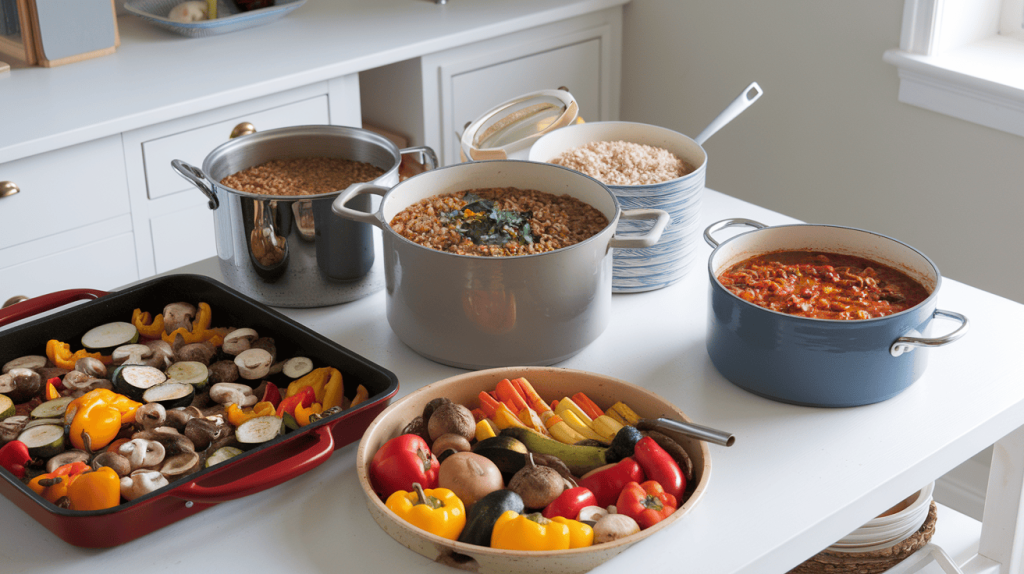
- Lentil Soup
Lentil soup is a great option for a make ahead meal. It’s filling, packed with protein, and freezes well. Make a big pot on Sunday. Divide it into containers and freeze half for later. You can add veggies like carrots, celery, and spinach for extra goodness. Enjoy it with crusty bread or on rice.
Tip: If the soup thickens when you heat it, add a little vegetable broth to loosen it up. - Seitan Taco Filling
Seitan is a fantastic high-protein option for plant-based meal prep. This savory, meaty alternative absorbs flavors well and works great for tacos, grain bowls, or stir-fries. Make a big batch of seasoned seitan taco filling with spices like cumin, smoked paprika, and garlic powder. Store it in the fridge or freezer, and use it throughout the week for quick, satisfying meals.
Tip: Warm it up in a skillet with a splash of lime juice for extra flavor before serving. - Roasted Vegetables with Quinoa or Rice
Roasted veggies are super easy and essential for batch cooking. Pick your favorites like sweet potatoes, zucchini, bell peppers, and broccoli. Cut them up and toss with a bit of olive oil, salt, and spices. Roast at 400°F until they’re soft and slightly browned. Serve them with quinoa or rice for quick meals during the week.
Tip: Keep the veggies and grains in separate containers to stay fresh and avoid mushy grains. - Vegan Chili
Vegan chili is cozy and one of the easiest meals to make in bulk. Use beans (black, kidney, or pinto), diced tomatoes, and spices like cumin and chili powder. You can add corn, bell peppers, or sweet potatoes for more flavor. It freezes well too, so make extra and save some for busy weeks.
Tip: Chili tastes even better the next day, so let it sit in the fridge overnight to let the flavors mix. - Overnight Oats
Don’t forget about breakfast! Overnight oats are a simple way to start your day. Mix rolled oats, plant-based milk, and your favorite toppings like fresh fruit, nuts, or chia seeds in jars. Keep them in the fridge for a quick breakfast all week.
Tip: Add fresh fruit just before you eat to keep everything fresh longer.
Pick one or two to try this week. You’ll see how much easier mealtimes can be. Soon, your fridge will be stocked with tasty, homemade meals!
Common Mistakes to Avoid When Batch Cooking
While making meals ahead of time is a great way to speed up meal time during the week, there are some common mistakes you should watch out for. Avoiding these pitfalls can make batch cooking smoother and more enjoyable. If you’re new to meal prepping, check out Common Meal Prep Mistakes and How to Avoid Them for a deeper dive into what can go wrong and how to fix it.
- Doing Too Much at Once
It’s tempting to cook a bunch of recipes when you start batch cooking. But making five or six dishes in one go can cause chaos in your kitchen. You will more than likely feel overwhelmed and probably mix up things.
What to Do Instead:
Start with 2–3 recipes that use similar ingredients. For example, cook some roasted veggies, a grain dish, and a hearty soup. This way, you’ll keep it simple and won’t spend your whole day cooking. As you get more comfortable, you can add more recipes later. - Not Checking Your Fridge, Freezer Space and Container Space
After a big cooking session, it’s a bummer to find you don’t have enough room to store your meals. A packed fridge or freezer makes it hard to find things and can mess with cooling. It is also tough to be at the point where you are ready to put everything away only to realize that you don’t have enough containers or baggies.
What to Do Instead:
Take a quick look at your fridge and freezer first. Throw out any expired food or items you won’t use soon to clear some space. If your freezer is tight, use freezer bags instead of containers to save room. Prepare your containers so you can get it all put away nicely. - Forgetting to Label Your Containers
You might think you’ll remember what’s in each container, but it’s easy to forget. A few days later, you could be left wondering if that’s soup or chili. Not labeling can also lead to wasted food.
What to Do Instead:
Make it a habit to label your meals. Use masking tape or freezer-safe labels to write down the name and date. You could even use different colors for different types of food to make it fun. - Not Rotating Meals for Freshness
Even tasty meals can get freezer burn if they sit too long. This happens when older meals are buried under new ones, leading to waste, disappointment, and a tear or two.
What to Do Instead:
Follow the “first in, first out” rule. When you add new meals to your freezer, push the older ones to the front. Use clear containers or bags so you can see what you have easily. If you’re storing food for a while, think about vacuum-sealing to keep air out.
Batch cooking takes practice, and mistakes will happen. Just start small, stay organized, and be patient with yourself as you learn. By dodging these common mistakes, you’ll save time, reduce waste, and make meal prep easier. And remember, if things go wrong, you can always adjust your plan next week!
Time-Saving Tips for Batch Cooking
Making your meals ahead of time can save you time during the week but you don’t want to be in the kitchen longer than you have to. Here are some easy tips to speed things up:
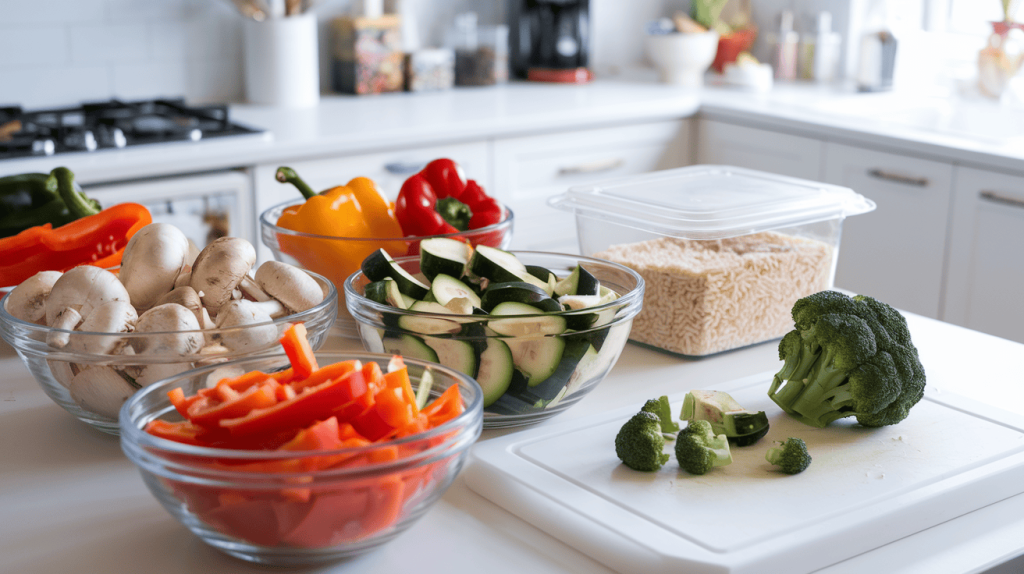
- Prep in Stages
Batch cooking a whole week’s meals at once can feel like a lot. Instead, break it into smaller steps. Chop your veggies the night before. Cook grains in the morning. Then put everything together later. This way, you won’t feel too stressed, and you’ll still get it all done.
Quick Tip: Keep chopped veggies in airtight containers with a damp paper towel to keep them fresh until you cook. Check though, some veggies like to be in a dry environment (I’m looking at you cauliflower). - Use Time-Saving Gadgets
Gadgets can really help when batch cooking. A food processor can chop, shred, or blend in no time. Slow cookers and Instant Pots let you cook large meals with little effort. Just set it up and let it cook while you take care of other things.
Quick Tip: If you plan to batch cook often, get a good food processor. It saves a ton of time for prepping veggies, making sauces, or soups. - Double Recipes That Freeze Well
When you make a big pot of soup or chili, consider doubling the recipe. It doesn’t take much more time, and you’ll have extra meals ready to go. Just freeze what you don’t need right away for busy nights later.
Quick Tip: Freeze meals in portions. This way, you can grab what you need for a quick meal—whether it’s a single serving or enough for the whole family.
Why Batch Cooking is Great for a Plant-Based Diet
If you’re just starting or you’ve been doing this for a while, prepping meals ahead can make your plant-based journey easier and less stressful. Here’s why batch cooking fits nicely with this lifestyle:
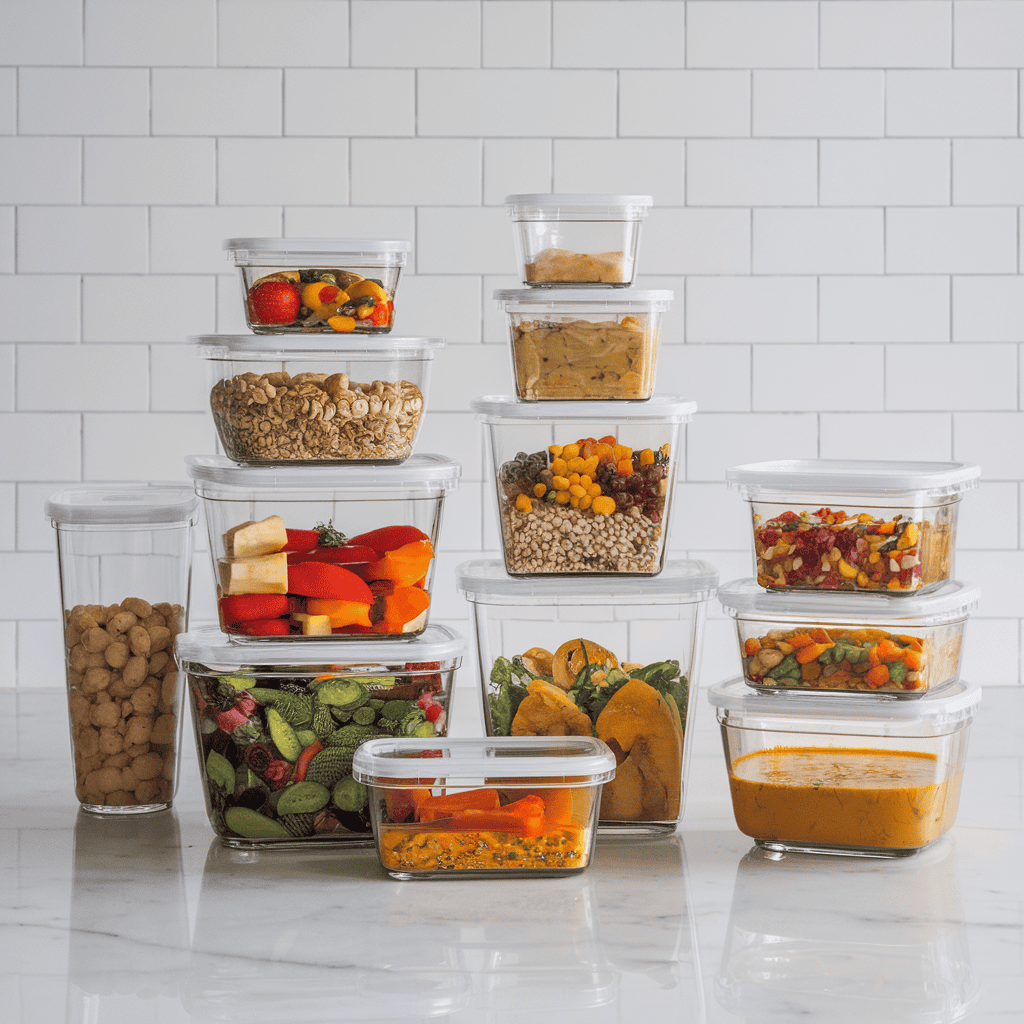
- More Veggies and Whole Foods
A plant-based diet is all about fresh vegetables, whole grains, and plant proteins. When you batch cook, you can prep these healthy foods in advance. Roasting veggies, cooking large pots of beans, or making grains like rice or quinoa means you’ll have good food ready all week.
Tip: Prepare things like roasted sweet potatoes or chickpeas. They’re great for grain bowls, salads, or wraps. This way, your meals stay fun and varied. - Control Your Portions and Ingredients
With batch cooking, you know exactly what’s in your meals. You choose your ingredients, flavors, and portion sizes. This is important for a plant-based diet, especially if you want to make sure you get enough protein or cut down on oils and sugars.
By dividing meals into single containers, you make it easier to avoid overeating and mindless snacking. It’s about making healthy choices simple. - Less Stress During the Week
We’ve all had those nights when you come home tired and there’s hardly anything in the fridge. Batch cooking takes away that worry. You can have a fridge full of meals ready to eat. Whether it’s warming up some vegan chili or tossing prepped veggies into a salad, dinner is easy.
Tip: Pick a quiet day like Sunday to do your batch cooking. You’ll be glad you did when the week gets busy. - Try New Recipes
One of the best parts of a plant-based diet is trying new flavors and foods. Batch cooking lets you experiment with new recipes without the daily pressure. Try a vegan curry, a hearty lentil soup, or a plant-based lasagna. You can still have your go-to meals prepped.
You can even tweak recipes to fit your taste. Want more spice? Go for it! Need to skip an ingredient? Easy! You’re in charge of every meal.
Cooking this way makes living a plant-based life easier and more fun. It helps you pack in whole foods, cuts down on mealtime stress, and boosts your creativity in the kitchen. Plus, there’s something satisfying about having your fridge filled with meals that match your values.
Start Batch Cooking Today!
Batch cooking is a smart way to save time and stress. It helps you have healthy meals ready, even on your busiest days. If you want to eat more veggies or try new recipes, batch cooking is great for that.
If you’re new to it, keep it simple. Choose one or two recipes to start. Maybe try a hearty lentil soup or some roasted veggies. This will make mealtime easier. With a little planning, you can fill your fridge and freezer with meals that are ready to go.
What’s Next?
Are you ready to jump in? Check out some easy batch cooking recipes or find tips to make your prep time easy. You’ll be surprised at how much time and energy you can save.
Making meals ahead will help you to focus more time on what you love. So let’s get started! Your fridge full of plant-based meals is waiting!
